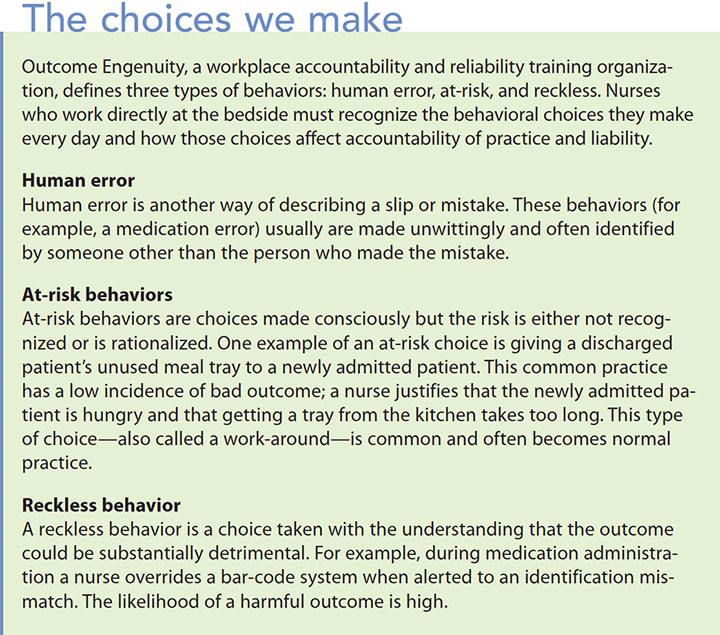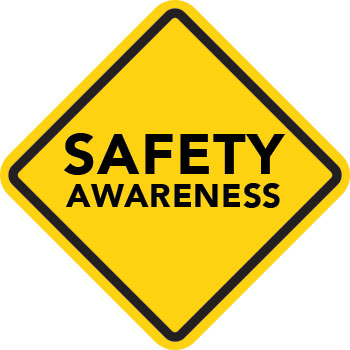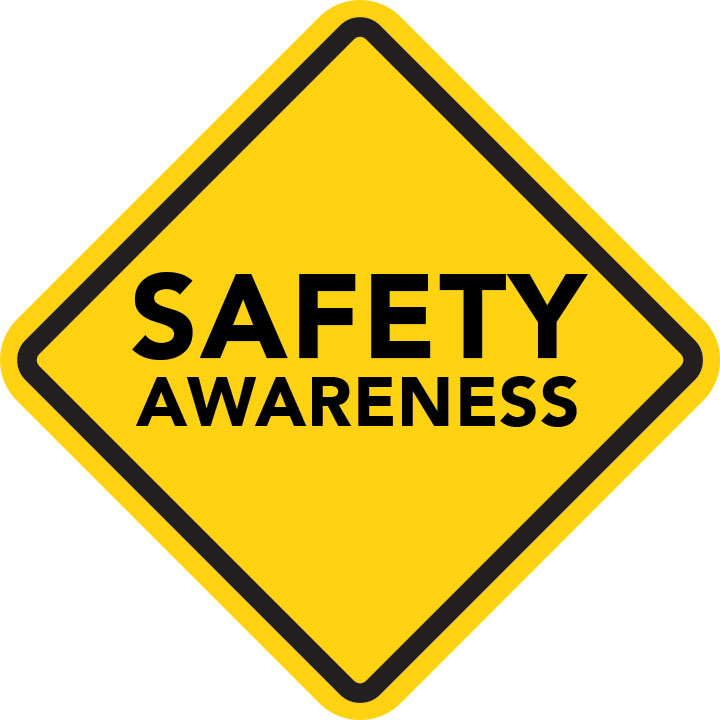Whether you’re a direct-care nurse or a leader, you’re responsible for speaking up and taking action to keep patients safe.
Takeaways:
- Direct care nurses are error identifiers.
- Organizations are accountable for their systems.
- Nurse leaders are responsible for developing an environment where it’s safe to speak up.
- Collaboration is essential to patient safety.
By Linda Paradiso, DNP, RN, NPP, NEA-BC
Leaders are essential to developing a safety environment, but all healthcare staff are responsible to practice safely. In a country where medical errors are the third leading cause of death, we can learn to decrease those deaths by improving our systems through voluntary reporting of errors and near misses. Nurses, because of their closeness to patients, can easily identify and report errors and unsafe conditions.
High-reliability organizations want to know what’s working and what’s broken so that improvements can be made. (For more about high-reliability organizations, read Promoting high reliability on the front line.) Ideally, organizations are accountable for the systems they design, and nurses are accountable for the quality of their choices as they practice within those systems. In this perfect world, discipline is based on the behavioral choice an employee makes, not the injury to a patient. (See The choices we make.)


Error identification
Direct-care nurses are well positioned to identify errors. However, when they work in chronically understaffed and stressful conditions, the quality of their choices will suffer. Of course, direct-care nurses (and leaders) need to appreciate the acceptable reasons for violating a patient safety policy or procedure. For example, you wouldn’t expect a pediatric nurse to stop for hand hygiene before rescuing a child climbing over the crib rail. High-reliability organizations understand this and develop as many system improvements as possible to keep justifiable risks to a minimum.
Accountability as a root cause
Almost every hospital identifies non-punitive discipline in their quality-review processes, but many direct-care nurses report punitive discipline and negative responses from supervisors when incidents occur. Healthcare organizations tend to identify individual incompetence as a root cause, or in addition to, a systemic process error. Nursing quality performance committees rarely close incident review cases without monitoring or retraining the nurse involved, even if they identify a contributing system issue.
Nurses may end up as second victims of an error. The Center for Patient Safety defines second victims as “healthcare providers who are involved in an unanticipated adverse patient event, medical error and/or a patient-related injury and become victimized in the sense that the provider is traumatized by the event.” This definition can be interpreted to include not just the event itself, but also colleagues’ and the organization’s response to it. Faulty systems should be redesigned; individuals working within the faulty system shouldn’t be punished unless, of course, they engage in reckless behavior.
Patient safety teamwork
Direct-care nurses must actively participate in the peer-review and performance-improvement process, and nurse leaders must provide an environment where nurses feel safe to speak up. When leaders create an atmosphere of teaching rather than preaching, they destigmatize incident management and normalize patient safety events. The result is that nurses share the knowledge and rationale for a behavioral choice that supports a nonpunitive response by leaders and focuses improvement on the system instead of the individual.


Solutions developed by bedside nurses can be very meaningful. Through active direct-care nurse involvement and nurse leader system redesign, the organization can drive performance improvement from the bedside upward. Some facilities understand and bind employees and leaders through the creation of shared patient safety outcomes. Erin Bashaw noted that “Nurses in Magnet® facilities are more likely to report errors and participate in error-related problem solving because they feel empowered by the organizational culture and have supportive relationships with senior administrators.”
A nurse leader who personally responds to an event and participates in a debriefing has a better understanding of the system in which the event occurred. Supporting the direct-care nurse by helping to identify and understand the behavioral choice can assist in identifying the opportunity for system redesign. Debriefing also should include stress management for the nurse involved.
Error identification is critical to process improvement but is often difficult. Leaders should reward nurses for this effort by offering them support. An algorithm can help leaders maintain objectivity so they can focus on the behavioral choices made with the knowledge the nurse had at the time. And although it takes courage for nurses to speak up, it also takes courage for nurse leaders to refrain from discipline when they’re pressured to hold an individual accountable.
Make it safe to share
The quality of nurse leader response is critical to a safety culture where nurses feel safe to speak up. Nurses who trust their supervisors to listen, support, and console when they make human errors or risky choices will be more likely to escalate patient safety issues and speak up when participating in process improvement.
Human error is certain. Every nurse will find him- or herself in a situation that goes (or could have gone) wrong. Risky behaviors are frequently the result of faulty systems, so how we analyze the system in which the nurse is working will make the most impact on outcomes. Collaborative process improvement is fundamental to a patient safety culture. We all have to make it safe to share.
Linda Paradiso is an assistant professor at the New York City College of Technology – CUNY in Brooklyn.
Selected references
Agency for Healthcare Research and Quality. Hospital Survey on Patient Safety Culture: 2016 User Comparative Database Report. March 2016.
Agency for Healthcare Research and Quality. Care for the Caregiver Program Implementation Guide. April 2016.
Bashaw ES. Fusing Magnet® and just culture. Am Nurse Today. 2011;6(9):42-5.
Joint Commission, The. Sentinel Event Alert 57: The essential role of leadership in developing a safety culture. March 1, 2017.
Makary MA, Daniel M. Medical error—The third leading cause of death in the US. BMJ. 2016;353:i2139.
Outcome Engenuity. Core concepts: What does our model of accountability look like?
ant3-Focus 0n PATIENT SAFETY-208b


















